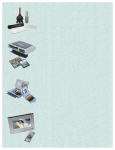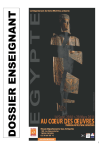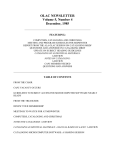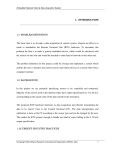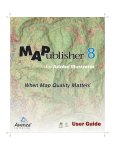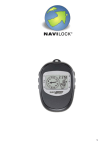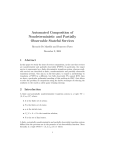Download the Horus Sundial User Guide - right
Transcript
HORUS SUNDIAL USER GUIDE Copyright © 2011 Horus Sundials™ ALL RIGHTS RESERVED Table of Contents Revision History..................................................................................................4 Introduction.........................................................................................................5 About Horus .......................................................................................................5 The Sundial.........................................................................................................6 Parts of a Sundial............................................................................................6 Types of Sundials............................................................................................7 Sundial Errors...................................................................................................11 The Latitude Error.........................................................................................12 The Equation of Time Error...........................................................................14 The Time Zone Error.....................................................................................16 The Daylight Saving Time Error....................................................................17 Horizontal Sundial Construction and Use.........................................................19 Horus Sundial Pre-setup Considerations..........................................................22 Horus Sundial Parts Identification.....................................................................23 What is Included...............................................................................................23 Horus Sundial Setup – Easy as 1, 2, 3, ...6......................................................24 Step #1 Orient North ...................................................................................24 Step #2 Level the Dial...................................................................................25 Step #3 Set the Gnomon...............................................................................26 Step #4 Set the Time Zone Slider to the Equation of Time Graph ...............30 Step #5 Align the Clock Dial to the Time Zone Slider....................................32 Step #6 Read the Shadow ...........................................................................36 Time Maintenance.........................................................................................39 Transport..........................................................................................................39 Ball Head and Tripod........................................................................................41 Care..................................................................................................................44 Sundial..........................................................................................................44 Transport Case.............................................................................................44 Quick Start........................................................................................................45 Step #1 Orient North ....................................................................................45 Step #2 Level the Dial ..................................................................................46 Step #3 Set the Gnomon ..............................................................................47 Step #4 Set the Time Zone Slider to the Equation of Time Graph ...............48 Step #5 Align the Clock Dial to the Time Zone Slider ...................................49 Step #6 Read the Shadow ...........................................................................50 List of Figures and Photographs.......................................................................51 COPYRIGHT © 2011 HORUS SUNDIALS™ ALL RIGHTS RESERVED PAGE 2 OF 56 WARNING: CHOKING HAZARD - Small parts. Not for Children Under 3 years. Plate 1 Small Parts Identification Several small parts of the Horus Sundial (identified above) are removable and can present a CHOKING HAZARD. Not for Children Under 3 Years. COPYRIGHT © 2011 HORUS SUNDIALS™ ALL RIGHTS RESERVED PAGE 3 OF 56 Revision History Version 1.0 04/29/11 Original Version 1.1 05/05/11 Minor corrections Printed in the United States of America Patent Pending Copyright © 2011 Horus Sundials All Rights Reserved Horus Sundials™ COPYRIGHT © 2011 HORUS SUNDIALS™ ALL RIGHTS RESERVED PAGE 4 OF 56 Introduction This Horus Sundial User Guide provides instructions for the use and care of your Horus Sundial and accessories. To increase your enjoyment of the Horus Sundial this User Guide also provides introductory material about sundials in general and the way that we can tell time by the position of the sun. If you are impatient, or just need a refresher, you can jump to the Quick Start section on page 45. About Horus We chose the Egyptian deity Horus as the symbol of our sundial. Horus is often depicted as a falcon or as a falcon-headed man wearing the crown of Egypt. Horus was regarded as the ruler of the sky, including the sun and moon. Later in Egyptian mythology Horus was merged with Ra, the sun god, who was often depicted as a falcon with the sun disk on his head. The merged Ra Horus was known as Re-Horakhty. Plate 2 Horus and Re-Horakhty Despite the apparent similarity, the English word “hour” does not derive from Horus, but from “hora,” found in both Latin and Greek. COPYRIGHT © 2011 HORUS SUNDIALS™ ALL RIGHTS RESERVED PAGE 5 OF 56 The Sundial On a sunny summer day at the north pole you could build a sundial by sticking a vertical pole in the ground and marking the position of the shadow each hour for 24 hours (yes, the sun would be up the entire time due to the tilt of the earth). If you then measured each of your marks you would find that they are all 15 degrees apart (15 degrees * 24 hours = 360 degrees, one rotation of the earth). You would find the same result if you did this at the south pole, and if you could take your pole to the center of the earth and make a sundial there you'd find the same constant 15 degrees per hour. This is the principle behind the simplest sundial, called an equatorial dial, so-called because the plane of the dial lies in the plane of the earth's equator. Parts of a Sundial The simplest sundial consists of only two parts, a gnomon to cast the shadow and the dial plate on which the shadow is cast; the dial plate being marked with hour lines. The nature of these parts can vary considerably given the type of sundial; the dial plate can be a curved surface, the gnomon a rod, the hour lines an analemma, all as will be seen in the following sections. Figure 1 Simple Horizontal Sundial The gnomon casts its shadow on the dial plate which is marked with hour lines. The gnomon points to true north and is angled relative to the dial plate at the latitude angle. Hour lines must be drawn according to the latitude of the dial. COPYRIGHT © 2011 HORUS SUNDIALS™ ALL RIGHTS RESERVED PAGE 6 OF 56 Myths and misconceptions alert – You may hear folks talk about the “style” and the “gnomon” as if they are different or the same. On a horizontal dial the gnomon is the typically triangular part standing erect on the base plate, while the style is the upper edge of the gnomon which casts the shadow. The bottom of the gnomon which sits on the dial plate is properly the “substyle.” Everything after the gnomon and the dial plate with hour lines is lumped into the category of “furniture,” some of which is useful, like a chart or table of corrections for the equation of time, or artful, like a motto or saying inscribed on the dial (“Tempus fugit,” “Let others tell of storms and showers; I mark only the sunny hours”). Portable sundials, such as the Horus Sundial, tend to include more useful furniture, like leveling means and north pointing means, which are unnecessary in fixed installations. Types of Sundials The functioning and layout of the hour lines of an equatorial dial can be used to derive the layout of all other sundials, a process that has been carried out countless times from antiquity to create literally thousands of different sundial designs. Figure 2 Gnomon Shadows on Various Dials A gnomon rod casts its shadow on various surfaces to create different sundial types. Only the hour lines on the equatorial and cylindrical dials are equally spaced at all latitudes. The hour lines for planar (vertical, polar, horizontal) dials are drawn according to the latitude of the dial. COPYRIGHT © 2011 HORUS SUNDIALS™ ALL RIGHTS RESERVED PAGE 7 OF 56 Figure 3 Equatorial Dial Note that the hour lines are equally spaced at 15 degrees. The gnomon rod is pointed at true north, aligned with the earth's axis. The dial plate lies in the plane of the earth's equator – it only seems tilted because you are standing on the surface of a ball. Plate 3 Cylindrical Dial The dial plate is a surface of revolution (here a cylinder) with the rod gnomon at its center. The gnomon is pointed at true north, tipping the dial to the latitude. Hour lines are equally spaced at 15 degrees. COPYRIGHT © 2011 HORUS SUNDIALS™ ALL RIGHTS RESERVED PAGE 8 OF 56 Plate 4 Armillary Sphere Dial The dial plate is a surface of revolution (here a circle) with the rod gnomon at its center. The gnomon is pointed at true north, tipping the dial to the latitude. Hour lines are equally spaced at 15 degrees. Plate 5 Aperture Ring Dial Often worn as a necklace, the aperture casts a spot of light in place of a gnomon casting a shadow. The center ring rotates to the marked months to correct for the Equation of Time. COPYRIGHT © 2011 HORUS SUNDIALS™ ALL RIGHTS RESERVED PAGE 9 OF 56 Plate 6 Two Vertical Dials The hour lines are drawn according to the latitude and the orientation of the walls with respect to true north. Plate 7 Polar Dial The gnomon points to true north casting its shadow along the length of the dial plate. Hour lines are drawn according to the latitude of the dial. COPYRIGHT © 2011 HORUS SUNDIALS™ ALL RIGHTS RESERVED PAGE 10 OF 56 Plate 8 Horizontal Dial The gnomon points to true north and hour lines are drawn according to the latitude of the dial. Sundial Errors We could have titled this section “Solar System Errors,” for had the solar system been the perfectly circular symmetrical creation of medieval doctrine the sundial would function perfectly year round. However, our solar system is really quite a mess, the earth is tilted, wobbles on its axis, does not go around in a circle, speeds up for half of the year, and is actually slowing down. We can ignore some of these errors, but we have to account for most of them. Myths and Misconceptions Alert – “Sundials don't work.” Regrettably often true; a sundial must be properly designed for its latitude, properly installed, and account for the imperfect geometry of our solar system. That said, sundials do work. COPYRIGHT © 2011 HORUS SUNDIALS™ ALL RIGHTS RESERVED PAGE 11 OF 56 The Latitude Error A horizontal sundial, wherein the hour lines are not equally spaced at 15 degrees, must be designed for the latitude where it will be used. This is often not the case; most mass produced garden sundials are designed for a generic latitude and tell time correctly only by happy coincidence. Figure 4 Lines of Latitude Drawn on the Earth A horizontal dial has its dial plate level to the earth's surface and its gnomon pointed at the north star, both of these angles change as the dial is moved to different latitudes. The hour lines must be drawn while taking into account the latitude of the dial. This can be done by careful graphical construction or by solving the Hour Line Equation for each hour: Hour Line angle from noon = arc tan(sin(latitude)*tan (hours from noon*15)) Note that the Hour Line Equation includes a latitude term; so the hour line angle changes as the latitude changes. Also remember that the gnomon must point to true north, being aligned to the axis of the earth, so as the sundial is moved in latitude the gnomon angle must change as well. COPYRIGHT © 2011 HORUS SUNDIALS™ ALL RIGHTS RESERVED PAGE 12 OF 56 Figure 5 Two Horizontal Dials The hour lines for two horizontal sundials, one designed for 30 degrees latitude (black) and a second designed for 50 degrees latitude (red). You can readily see the difference in the hour line spacing between these two dials; if they were reversed in their installation locations neither would tell the correct apparent solar time. Plate 9 Horus Sundial Hour Curves COPYRIGHT © 2011 HORUS SUNDIALS™ ALL RIGHTS RESERVED PAGE 13 OF 56 The Hour Curves are drawn for the correct latitude as represented on the Solar Dial Maps. To make the Horus Sundial tell solar time correctly across the 48 states we have drawn the hour lines as curves. The Hour Line Equation was solved for each hour for the six latitudes from 25 to 50 degrees. Each solution was then plotted onto the six Latitude Arcs and connected to form an Hour Curve. We have then overlaid these curves onto a set of Solar Dial Maps. This system allows the solar time to be read by noting where the gnomon shadow crosses your locational arc as indicated on the Solar Dial Map. The Equation of Time Error The sundial we built at the north pole had hour lines spaced equally at exactly 15 degrees. From the construction of these hour lines, we can derive the angles of all other types of sundials; well not quite. Even in ancient times it was recognized that the “exactly” 15 degrees wasn't so exact. Something else was going on that made the sun go “fast” or “slow,” and when accurate time pieces emerged in the 16th century the difference between sun time and clock time, once of importance only to early astronomers, could be observed by everyday people. The “something else that is going on” are small changes in the earth's trip around the sun that we don't normally observe in our daily lives. We don't notice that the earth's orbit around the sun is not a perfect circle, but an ellipse, with the sun being slightly off-center. When the earth swings around the sun at its closest point (perihelion) it actually travels faster and the days are a few seconds shorter than when the earth is at its farthest point (the aphelion). The effect is small, about 8 seconds in a day, but accumulates to create an annual cycle the makes the sun fast or slow by about plus minus 7 minutes. Figure 6 Earth Orbit The orbit of the earth is elliptical with the sun slightly offset from the center. One half of the orbit takes about 180 days, the other half about 185 days. The tilt of the earth's axis, besides creating the seasons, contributes a second component to the sun being fast or slow. The cycle of this component is twice per year, and makes the sun COPYRIGHT © 2011 HORUS SUNDIALS™ ALL RIGHTS RESERVED PAGE 14 OF 56 fast or slow by about plus minus 9 minutes. These two cycles are not in phase, sometimes one is making the sun faster while the other is making it slower; the two combine to produce a net effect known as the Equation of Time. Figure 7 Graph of the Equation of Time Two effects, the elliptical orbit of the earth and the tilt of the earth, combine to create the Equation of Time, which makes the sun, and sundials, fast or slow at different times of the year. Plate 10 Graph of Equation of Time on the Horus Sundial This Equation of Time graph engraved on the Horus Sundial Solar Dial corrects the Clock Dial for the Equation of Time error. If the earth's axis were perpendicular to its orbit, and if the orbit was a perfect circle with the sun at its center then the sun would be a perfect timekeeper. The Equation of Time expresses the difference between this perfect timekeeping sun and the solar system in COPYRIGHT © 2011 HORUS SUNDIALS™ ALL RIGHTS RESERVED PAGE 15 OF 56 which we find ourselves. Scientists refer to the time of the perfect timekeeper sun as “mean solar time”, and the time we experience as “apparent solar time.” Other effects are in play, but are so small and change so slowly that we won't notice. The arrival of accurate clocks revealed an important truth, if the clock and the sundial disagree it is the clock that is right, and the sundial has to be adjusted to correct it. However, even with the arrival of accurate clocks there remained the reliance on the sun for time keeping. Often a town or village had only one clock, perhaps in a church tower, which tolled the hours for all to hear. This clock may have been set to “high noon,” there being no other reference available. A town or village some distance away likely had its own version of “noon” especially if it was a far distance. The circumference of the earth at the equator is about 25,000 miles, and gets smaller as you go north or south from there. At latitude 45 degrees (about New York, NY) the circumference is about 17,500 miles. At that latitude if you traveled east or west 300 miles your time by the sun would have changed by about 25 minutes, not exactly jet lag, especially if you were on horseback, but enough to account for different towns having different times. The Time Zone Error Then came the railroad. Travel sped up, and rail schedules had to be kept. The different railroad companies for a while kept their own schedules and times, often referencing time down the line to their headquarters or hubs. A town served by multiple railroads might find itself with several clocks, one for each railroad. In the 1860s this system, which by then had created some 50 different time standards in the USA, became unworkable. Finally, in 1883, the four US time zones were agreed (and some of the quirky time zone boundaries we still live with today were brought about by the rail line routes of the 1880s). Figure 8 Lines of Longitude Drawn on the Earth Lines of Longitude shown at 15 degree intervals each represent one hours' difference in COPYRIGHT © 2011 HORUS SUNDIALS™ ALL RIGHTS RESERVED PAGE 16 OF 56 apparent solar time. The four time zones in the USA each span about 15 degrees of longitude, and consequently each represents one hours' change in time. However, the longitude where time is officially marked for a time zone is not necessarily in the center of that time zone. In the Central time zone, for example, time is marked from about New Orleans. The Central time zone extends west all the way to west Texas, so if you find yourself in Midland, Texas your sun is nearly one hour “slow.” Figure 9 USA Time Zones Map showing the times zones of the USA and the lines of longitude where each zone's time is measured. The Daylight Saving Time Error Daylight Saving Time (DST) (sometimes Daylight 'Savings' Time, but the former is technically correct) is a recent formalization of an old system of setting work hours; after all, before clocks, people, especially agricultural workers (which was just about everyone), worked in the daylight, sunup to sundown. It appears that we owe the modern concept of daylight saving time to a bug collecting New Zealander, who wanted to get off work earlier in summer so he could pursue his hobby, and a golfing Englishman, who similarly wished for more daylight to play a round after work. In 1908 the British Parliament considered a daylight saving time measure but failed to pass it. Most of Europe went on DST to save coal during World War 1; and DST has come and gone several times since with a surprising degree of controversy. The USA adopted a form of DST in 1918 which has been modified multiple times since, most recently the change in dates made in 2007 which caused considerable havoc with deployed computer systems programmed to change automatically on the prior date scheme. We now change our clocks on the second Sunday of March and the first Sunday in November. Although the USA observance of DST is nearly universal there remain some quirks, particularly the state of Arizona, which remains on Standard Time year round except for the territory of the Navajo Nation, which observes DST, and within which lies the territory of the Hopi Nation, which does not. COPYRIGHT © 2011 HORUS SUNDIALS™ ALL RIGHTS RESERVED PAGE 17 OF 56 Figure 10 Arizona Daylight Saving Time That portion of Arizona in pink does not observe Daylight Saving Time. The Hopi Nation, in pink, is surrounded by the Navajo Nation, which does observe DST. The Horus Sundial provides a simple mechanism which accounts for these three error sources; Time Zone, Longitude and ST versus DST. Plate 11 Depiction of Time Zones on the Horus Sundial The four longitude lines highlighted with a circle show where time is measured in the time zone. With the adoption of standard time zones the poor sundial really fell onto hard times. It was one thing for a sundial to be wrong from a clock an account of the Equation of Time by up to 16 minutes during a part of the year. However, time zones spanning one hour meant the sundial would be off more or less permanently by as much as an hour. The sundial was relegated to monuments and sculptures, and the proliferation of garden sundials built for no particular latitude and installed with no particular care led to the common notion that “sundials don't work.” COPYRIGHT © 2011 HORUS SUNDIALS™ ALL RIGHTS RESERVED PAGE 18 OF 56 Horizontal Sundial Construction and Use The horizontal sundial is the most commonly seen dial type in gardens and monuments owing to its simplicity and natural beauty. A horizontal dial consists of a dial plate, on which the shadow is cast, and a gnomon, which casts the shadow (and it is gnomOn with an “o,” not gnomEn with an 'e,' although, both gnomons and gnomes are often found together in gardens). The dial plate is marked with the hour lines, and maybe minute lines. Unlike the equatorial dial discussed above, the hour lines on a horizontal dial are not equally spaced at 15 degrees. Horizontal dial hour lines are closer together at noon than they are at 6 and 6, and the exact spacing of the lines is determined by the latitude where the dial is to operate. The gnomon of the horizontal dial stands at a very specific angle to the dial plate, that angle being equal to the latitude where the dial is to operate. A horizontal dial designed for a specific latitude, that is, having the hour lines properly drawn and the gnomon set at the latitude angle, will accurately tell apparent solar time if it is installed at that latitude and is level with the gnomon pointing to true north. So, to tell apparent solar time with a horizontal sundial, we need a sundial that is: − designed for our latitude, − installed level to the earth, − and pointed at true north. To account for the errors introduced by the Equation of Time some horizontal dials include a chart or graph giving the necessary correction based on the day and month. Having read the apparent solar time from the shadow on the hour lines, the user need do a little mental arithmetic, adding or subtracting some minutes obtained from the Equation of Time chart or table, to arrive at mean solar time. You can't get from apparent solar time to clock time without going through mean solar time (that's not the fault of the railroads this time, blame Ptolemy). Having done the mental arithmetic to correct apparent solar time to mean solar time, to tell actual clock time you then have to account for where you are relative to where time is measured in your time zone. As noted above, a 300 mile west or east displacement can add or subtract 25 minutes, and the entire time zone can span an hour. Of course you can do this, you just need to know the longitude where time is measured in your time zone, and know your longitude, then add or subtract one minute for every minute of longitude difference, and oh yes, maybe then subtract one hour for Daylight Saving Time. Not to worry, the Horus Sundial saves all the mental gymnastics, read on. A Bit of the Basics – Level and North? The hour lines on a horizontal dial are drawn to trace the line that a ray of light from the sun COPYRIGHT © 2011 HORUS SUNDIALS™ ALL RIGHTS RESERVED PAGE 19 OF 56 travels past the gnomon to create a shadow. This little bit of geometric trickery requires that the sundial be level to the earth and that the gnomon be pointed at true north. True north, that is the tricky bit, so we tackle that first. True north is the direction of the axis of the earth, the axis about which the earth rotates. True north is not the same as magnetic north, the geographic north pole is not the same as the magnetic north pole. Maps are commonly marked North, meaning true or geographic north. Hikers commonly employ a compass to navigate through unknown regions with reference to a map, and many have wandered and wondered for having failed to account for the fact that true north (on the map) and magnetic north (on the compass) can be 10 or even 20 degrees different. To account for this difference many compasses are equipped with a rotating ring or similar device which can be set to the local magnetic declination, that is, the difference between true and magnetic north, which difference can be obtained from magnetic declination maps. Figure 11 Magnetic Declination World map showing isogonic lines (lines of constant magnetic declination). Isogonic lines of zero declination are called agonic lines. In the USA the declination ranges from +20 degrees to -20 degrees with an agonic line running roughly through New Orleans. COPYRIGHT © 2011 HORUS SUNDIALS™ ALL RIGHTS RESERVED PAGE 20 OF 56 Myths and Misconceptions Alert – You may have noticed that the map of Figure 11 is headed with the year “2000.” The earth's magnetic field and orientation are not constant, so a map of magnetic declination is only good for a given time period. In fact the earth's north magnetic pole and south magnetic pole have actually reversed many times; the last such reversal was about 780,000 years ago. Myths and misconceptions alert – Pointing the gnomon at true north is not really about pointing to the geographic north pole, but about pointing to where the earth's axis at the geographic north pole points, at Polaris, the north star (roughly, Polaris is actually a touch off). The north pointing idea is that the style of the gnomon be made parallel to the rotational axis of the earth. Polaris is so far away compared to the diameter of the earth that anything pointed at Polaris from anywhere on earth is parallel to the earth's axis. Plate 12 Magnetic Declination Map on Horus Sundial When you set the south pointing compass needle to your location on the Magnetic Declination Map then the Horus Sundial Gnomon Rod is pointed at true north rather than magnetic north. COPYRIGHT © 2011 HORUS SUNDIALS™ ALL RIGHTS RESERVED PAGE 21 OF 56 Again, not to worry, the Horus Sundial saves you from this little magnetic declination brain teaser. Level is, fortunately, level the world over (which is weird when you think about it, the earth being an oblate spheroid and all). The Horus Sundial provides built-in Leveling Feet and Spirit Levels, as well as a tripod mounting socket, as are described in the detailed setup section. Horus Sundial Pre-setup Considerations Before going into the actual setup procedure for the Horus Sundial we need to first consider the general environment and the selection of the best location. Let's assume that you've parked your gigantic diesel powered land yacht in your favorite campground and want to put the Horus Sundial to work for a couple of days; what do we watch out for? Sun exposure is the obvious first consideration. So, put your left shoulder to where the sun will likely come up and your right shoulder to where it will go down and you are facing pretty much south. The sun will arc from your left to your right and will be blocked by any tall trees or obstacles in that arc. Choose a spot where you'll get the full arc of the sun if possible. The opportunity to set the dial level, either on its own Leveling Feet or on a tripod, is the second priority. Thirdly, look out for stray magnetic fields that can disrupt the Compass. Large metal objects (like a recreational vehicle), metal picnic table, metal fire ring, power lines or poles can all possibly alter your compass reading. And remember, underground pipes, particularly large cast iron sewer pipes in campgrounds which are often shallow, can cause interference. If in doubt carry the Horus Sundial away from and up to the object and see if there is any Compass needle swing as you approach. And don't forget about your person, that flashlight in your front pocket, the one with the handy magnet to stick it to the fridge? Ten or so feet of separation from most anything is safe. If operating on a garden pedestal apply the same rules as for operating in portable mode above. Select a pedestal that is stone or resin rather than metal to avoid magnetic interference. If you display your Horus Sundial at home or office and can choose a location with exposure to a south facing window it will receive sun and tell time for at least part of the day. If you don't have a suitable window location consider a place with directed light, like a lighted book shelf or display case, where you will get a shadow, albeit a fixed one. COPYRIGHT © 2011 HORUS SUNDIALS™ ALL RIGHTS RESERVED PAGE 22 OF 56 Horus Sundial Parts Identification Plate 13 Horus Sundial Parts Identification What is Included In addition to the complete Horus Sundial we have included in your kit the following additional items: 1. One microfiber polish cloth 2. Additional Gnomon Rod Stops (o-rings) 3. Printed Full Color User Manual COPYRIGHT © 2011 HORUS SUNDIALS™ ALL RIGHTS RESERVED PAGE 23 OF 56 Horus Sundial Setup – Easy as 1, 2, 3, ...6 If you know roughly where you are in the USA then you can quickly and easily setup the Horus Sundial and achieve excellent clock time accuracy (if you can't find your rough location on a map of the USA we suggest you not monkey with a sundial and tend to higher priorities instead). Step #1 Orient North Align the compass south needle to your location on the Magnetic Declination Map. Plate 14 Horus Sundial North Pointing System The Horus Sundial is provided with a Magnetic Declination Map and Compass to assist in pointing the dial to true north. The sundial's Gnomon Rod must be pointed at true north. The south needle of the Compass is located adjacent to the Magnetic Declination Map. When you orient the sundial such that the south needle points at your location on the Magnetic Declination Map the Gnomon Rod is pointed at true north. COPYRIGHT © 2011 HORUS SUNDIALS™ ALL RIGHTS RESERVED PAGE 24 OF 56 The declination lines on the Magnetic Declination Map are marked at 5 degrees of declination intervals. If your location lies between two marked declination lines just visualize an imaginary line between the marked lines and point the needle to the imaginary line running through your location. Be certain that you are seeing the south pointing end of the compass needle. The north pointing end of the compass needle's tip is colored red. If you see the red tip you need to swing the dial half way around. The error in solar time resulting from an error in north pointing varies depending on the time of day (greater time error effect nearer to the noon hour) and latitude (greater time error effect in the northern latitudes) but on average an error of 1 degree in north pointing will cause an error of 4 minutes in apparent solar time. Step #2 Level the Dial Set the two Spirit Level bubbles to center. Plate 15 Horus Sundial Leveling System The Horus Sundial is provided with three adjustable Leveling Feet and two Spirit Levels to assist in setting the sundial level. The sundial must be level to read correctly. You can level the sundial either by placing it on a tripod or by placing it directly on a relatively level surface and using the built-in Leveling Feet to make it level. COPYRIGHT © 2011 HORUS SUNDIALS™ ALL RIGHTS RESERVED PAGE 25 OF 56 The Spirit Level's bubble sensitivity is about plus to minus 2 degrees; that is, from the bubble being centered until just bumping onto the end of the Spirit Level is about a two degree error off level. And going from the bubble bumping on one end to bumping on the other end is about a four degree change. A one degree change in level in the north south direction will have about the same effect on time reading as a one degree error in setting the Gnomon Rod angle or in reading the Solar Dial Map latitude, in other words, REALLY SMALL. When leveling on a tripod keep a good hold on the sundial Base Plate while you loosen and adjust the ball head or pan-tilt adjustments to prevent the sundial from tipping and unbalancing the tripod. Step #3 Set the Gnomon Set the bottom of the Gnomon Rod horizontal to your location on the Gnomon Support Map. Plate 16 Horus Sundial Gnomon Angle Setting System – showing both sides of the gnomon support. Set the bottom of the Gnomon Rod horizontal to your location on the Gnomon Support Map to set the Gnomon Rod to the correct latitude angle. The Gnomon Support sits in a slot in the Base Plate. There is a small alignment mark on the Base Plate, directly in line with the Solar Dial's noon line, which should be aligned to the center mark on the Gnomon Support. One end of the Gnomon Rod goes into the slot on the Top Cap, the other goes through the Gnomon Rod Slot in the Gnomon Support. A small neoprene O-ring, the Gnomon Rod Stop, COPYRIGHT © 2011 HORUS SUNDIALS™ ALL RIGHTS RESERVED PAGE 26 OF 56 slides along the Gnomon Rod and serves to hold the Gnomon Rod in place. Plate 17 Gnomon Support Aligned to the Base Plate Engraved lines on the Gnomon Support and Base Plate provide for correct alignment of the Gnomon Support. The angle of the Gnomon Rod must be set equal to your latitude angle. You don't need to know your latitude to do this, so long as you can find your location on the Gnomon Support Map. Just find your location, imagine a horizontal line from your location to the Gnomon Rod Slot, and set the bottom of the Gnomon Rod at that point. Slide the Gnomon Rod Stop Oring along the Gnomon Rod to support it at this point. COPYRIGHT © 2011 HORUS SUNDIALS™ ALL RIGHTS RESERVED PAGE 27 OF 56 Plate 18 Imaginary Horizontal Line through Midland, Texas to the Gnomon Slot sets the Gnomon Rod angle at about 32 degrees (actual Midland latitude is 31° 59' ). You may think that the Gnomon Support Maps look a little strange, a sort of fun-house-mirror effect, and you are correct; these maps have been “stretched” to match the latitude of the map to the angle from the Solar Dial's face. COPYRIGHT © 2011 HORUS SUNDIALS™ ALL RIGHTS RESERVED PAGE 28 OF 56 Plate 19 Imaginary Horizontal Line through Midland, Texas to the Gnomon Slot sets the Gnomon Rod angle at about 32 degrees (actual Midland latitude is 31° 59' ). The time reading error produced by an error in the Gnomon Rod angle setting is approximately the same as the north-south leveling error. An error of one or two degrees will create a time error of a few minutes. COPYRIGHT © 2011 HORUS SUNDIALS™ ALL RIGHTS RESERVED PAGE 29 OF 56 Step #4 Set the Time Zone Slider to the Equation of Time Graph Align the end of the Time Zone Slider with the Equation of Time graph line for the current date. Plate 20 Horus Sundial Equation of Time Graph Aligning the Time Zone Slider to the Equation of Time Graph adjusts the Time Zone Map for the Equation of Time Error. The Time Zone Slider slides in rotary fashion above the compass opening. The right end of the Time Zone Slider is equipped with a thumbscrew to serve in positioning the Time Zone Slider and securing it in place. To adjust the position of the Time Zone Slider first loosen the thumbscrew, slide the Time Zone Slider to the current date relative to the Equation of Time Graph, then tighten the thumbscrew to hold the slider in position. Do not over-tighten the thumbscrew. Only light pressure is required to keep the Time Zone Slider in place, and over-tightening the thumbscrew can result in stripping the threads in the Time Zone Slider or scoring the surface of the underlying Base Plate. COPYRIGHT © 2011 HORUS SUNDIALS™ ALL RIGHTS RESERVED PAGE 30 OF 56 Plate 21 Horus Sundial Equation of Time Correction System The end of the Time Zone Slider is shown adjusted to align with the intercept of the Equation of Time Graph for April 1. The total swing of the Equation of Time is about plus minus 16 minutes. So your maximum error for this step is small, being off by a month, or off by a grid line, will result in about four minutes error. COPYRIGHT © 2011 HORUS SUNDIALS™ ALL RIGHTS RESERVED PAGE 31 OF 56 Step #5 Align the Clock Dial to the Time Zone Slider Align your location on the Time Zone Map with the Time Zone Slider. This is a two-for-one adjustment and the last you will need to make, correcting for both your longitude and for Standard Time versus Daylight Saving Time. The adjustment will be explained with reference to the Plates below. Plate 22 shows the Time Zone Map aligned to the Time Zone Slider for Standard Time. Notice that the four time zone meridians on the Time Zone Map are marked with little circles. These meridians are aligned with the Standard Time markings on the Time Zone Slider; - the circled meridian line running through California is aligned with the line marked “PS” for “Pacific Standard”, - the circled meridian line running through New Mexico is aligned with the line marked “MS” for “Mountain Standard”, - the circled meridian line running through Louisiana is aligned with the line marked “CS” for “Central Standard”, - the circled meridian line running through Washington DC is aligned with the line marked “ES” for “Eastern Standard”. Plate 22 Horus Sundial Time Zone, Longitude and Daylight Saving Time Correction System To align the Time Zone Map to the Time Zone Slider for Daylight Saving Time align; - the circled meridian line running through California is aligned with the line marked “PD” for “Pacific Daylight”, - the circled meridian line running through New Mexico is aligned with the line marked “MD” for “Mountain Daylight”, - the circled meridian line running through Louisiana is aligned with the line marked “CD” for “Central Daylight”, - the circled meridian line running through Washington DC is aligned with the line marked COPYRIGHT © 2011 HORUS SUNDIALS™ ALL RIGHTS RESERVED PAGE 32 OF 56 “ED” for “Eastern Daylight”. Using the thumbscrew on the Clock Dial to rotate it, you should start by first setting the circled meridian lines to either the Standard or Daylight marks on the Time Zone Slider. You have now made the correction for Standard or Daylight Saving time (and for the Equation of Time, since you previously set the Time Zone Slider to the Equation of Time graph). Now, knowing where you are on the Time Zone Map relative to the circled meridian line running through your time zone, “move yourself” to where your circle is. Plate 23 Horus Sundial Example Time Zone, Longitude and Standard Time Correction Plate 23 shows how a user in Midland, Texas, in the Central Time zone, on Standard Time, has “moved himself” to align with the Central Standard “CS” mark on the Time Zone Slider. COPYRIGHT © 2011 HORUS SUNDIALS™ ALL RIGHTS RESERVED PAGE 33 OF 56 Plate 24 Horus Sundial Example Time Zone, Longitude and Daylight Saving Time Correction Plate 24 shows how a user in Midland, Texas, in the Central Time zone, has “moved himself” to align with the Central Daylight “CD” mark on the Time Zone Slider. RECAP: 1. Align the Time Zone Map to the Time Zone Slider in one of two positions, circles aligned to Standard Time or circles aligned to Daylight Saving Time, 2. Move yourself to where your circle was and gently tighten the Clock Dial thumbscrew. Do not over-tighten the Clock Dial thumbscrew. Only light pressure is required to keep the Clock Dial in place, and over-tightening the thumbscrew can result in stripping the threads in the Clock Dial or scoring the surface of the underlying Base Plate. COPYRIGHT © 2011 HORUS SUNDIALS™ ALL RIGHTS RESERVED PAGE 34 OF 56 Plate 25 Horus Sundial Example Clock Dial to Solar Dial Offset Completed (the Gnomon Rod is removed from this photograph for clarity) Plate 25 shows the offset between the Clock Dial and the Solar Dial for a user in Midland, Texas on April 1. April 1 is during Daylight Saving Time. Here is a summary of the corrections shown in Plate 25: Equation of Time Error for April 1 – Solar Dial is 5 minutes slow, Daylight Savings Time Error – Solar Dial is 60 minutes slow, Longitude Time Error – Solar Dial is [102 degrees longitude -90 degrees longitude=12] = 60 * (12/15) = 48 minutes slow, for a total of Solar Dial slow by 1 hour 53 minutes. So the Solar Dial Noon line should align with the Clock Dial at 1:53, as shown in Plate 25. COPYRIGHT © 2011 HORUS SUNDIALS™ ALL RIGHTS RESERVED PAGE 35 OF 56 Step #6 Read the Shadow From the point where the Gnomon Rod's shadow crosses the arc of your location on the Solar Dial Map trace inward to the Clock Dial and read the clock time. Plate 26 Horus Sundial Shadow Crossing Your Location (the Gnomon Rod is removed from this photograph for clarity) Having made the required adjustments to the sundial you are now able to read the clock time by where the shadow falls on your location on the Solar Dial. First, find your location on any of the seven Solar Dial Maps. Take note of where your location is regards the marked Latitude Arcs on the Solar Dial. Your location is an arc running around the Solar Dial, just like the marked Latitude Arcs, and cutting across your position on each of the seven Solar Dial Maps. COPYRIGHT © 2011 HORUS SUNDIALS™ ALL RIGHTS RESERVED PAGE 36 OF 56 The shadow cast by the Gnomon Rod is a straight line running radially from the center of the sundial to the outer edge. The line of the shadow crosses through your location, that is, the line of the shadow crosses through the arc that runs through your position on any of the seven Solar Dial Maps. Plate 27 Horus Sundial Example Shadow and Latitude Arc Intercept Plate 27 shows the location for a user in Midland, Texas. His location is an arc that runs through Midland, between the 30 and 35 degree Latitude Arcs, all the way around the Solar Dial. The shadow of the Gnomon Rod is crossing his location at a spot that is between the Solar Dial 3 p.m. Hour Line and the 3:30 p.m. Half Hour Line. COPYRIGHT © 2011 HORUS SUNDIALS™ ALL RIGHTS RESERVED PAGE 37 OF 56 The apparent solar time is about 3:07 p.m. in Midland. This 3:07 time is now shown traced inward to the Clock Dial where it intercepts the Clock Dial at 5:00 p.m. The clock time in Midland is 5:00 p.m. Although the shadow cast by the Gnomon Rod is quite narrow; the best practice for reading the shadow is to read the side of the shadow being cast by the bottom of the Gnomon Rod. This side of the shadow will generally be closest to the noon line. When using the Shadow Finder you should rotate it such that the bottom shadow just falls on the edge of the Shadow Finder. Plate 28 Using the Shadow Finder and Senet The Shadow Finder is useful in certain lighting conditions to better see the shadow cast by the Gnomon Rod, particularly when the sun is high overhead. Rotate the Shadow Finder until the Gnomon Rod's shadow falls directly on it, then rotate it to allow the shadow to fall just at the edge of the Shadow Finder and onto the Solar Dial. The “Senet”, a moveable COPYRIGHT © 2011 HORUS SUNDIALS™ ALL RIGHTS RESERVED PAGE 38 OF 56 token threaded into the Shadow Finder, and can be set at six different latitudes corresponding to the Latitude Arcs, to serve as a “place holder“ for guiding your eye along the Hour Line. Time Maintenance Once you are setup, simply repeat Step 6 to read the clock time. After a month or so you'll need to repeat Steps 4-6 to account for the Equation of Time change. If you cross over the second Sunday of March or the first Sunday in November you'll need to repeat Steps 5 and 6 to account for the Standard Time / Daylight Saving Time changeover. Transport Your Horus Sundial can be collapsed flat for storage or transport. The steps for collapsing the sundial are: 1. Adjust the Leveling Feet to move the knobs up off the surface of the Base Plate by about ¼ inch. 2. Remove the Gnomon Support and lay it over the Top Cap. 3. Move the Gnomon Rod Stop O-ring to one end of the rod. 4. Lay the Gnomon Rod across the sundial as shown in Plate 28. 5. Lightly tighten down the Leveling Feet knobs onto the Gnomon Rod and Gnomon Support to hold them in place ( in the Transport Case the Lock-down Bar secures both the Gnomon Support and Gnomon Rod in place). Plate 29 Horus Sundial Collapsed for Storage or Transport Once collapsed as described above the Horus Sundial can be placed in the Transport Case as shown in Plate 30 below. COPYRIGHT © 2011 HORUS SUNDIALS™ ALL RIGHTS RESERVED PAGE 39 OF 56 Plate 30 Horus Sundial in Transport Case Plate 31 Transport Case COPYRIGHT © 2011 HORUS SUNDIALS™ ALL RIGHTS RESERVED PAGE 40 OF 56 Ball Head and Tripod The optional Ball Head and Tripod are sourced from Giottos and Benro respectively, both having been selected for their weight carrying capacity. Both are of high quality construction using primarily non-magnetic materials, namely aluminum and magnesium. There are some ferrous fasteners in both the Ball Head and Tripod which can have some residual magnetism. On receiving these items we unpack them, demagnetize them, and then repack them for shipment with the Horus Sundial. If you choose to use a head or tripod of your own selection be sure that both are rated for at least eight pounds and provide the standard ¼ inch tripod socket thread. A ball head is easier to use than a pan-tilt head since you can level the dial then use the swivel to point it to north, but a high quality pan-tilt head is certainly a viable solution. If you provide your own head and tripod check each for magnetic interference. Plate 32 Giottos MH1002-310 Ball Head The Base Plate of the Horus Sundial is provided with a standard ¼ inch tripod socket. The Ball Head should be securely tightened into the Base Plate tripod socket. COPYRIGHT © 2011 HORUS SUNDIALS™ ALL RIGHTS RESERVED PAGE 41 OF 56 Plate 33 Giottos MH1002-310 Ball Head and Benro A-058EX Tripod The Ball Head mounts to the Tripod using a standard 3/8 inch socket. COPYRIGHT © 2011 HORUS SUNDIALS™ ALL RIGHTS RESERVED PAGE 42 OF 56 Plate 34 Horus Sundial Installed on Tripod COPYRIGHT © 2011 HORUS SUNDIALS™ ALL RIGHTS RESERVED PAGE 43 OF 56 Care The Horus Sundial is made to last for generations with minimal care. Sundial The Base Plate of the Horus Sundial is hard black anodized aluminum, a surface treatment designed to resist scratches, corrosion and oxidation. The brass elements are polished and sealed with a fine brass lacquer. A microfiber polishing cloth is included with the Horus Sundial to remove fingerprints or dust. No chemicals or polishes should be applied to any surface. Transport Case The Transport Case is oak with a hand-rubbed oil finish. To achieve a classic luster and finish no polyurethane or similar top-coat is applied. To prevent drying, cracking and discoloring of the oiled wood, the case should be periodically treated with a natural wood cleaner / polish like Orange Oil. COPYRIGHT © 2011 HORUS SUNDIALS™ ALL RIGHTS RESERVED PAGE 44 OF 56 Quick Start This section is for those who just want a setup refresher or wish to jump ahead and setup the Horus Dial without worrying about all the whys and wherefores. We warn you in advance, you're missing some intriguing stuff found in the preceding 40-odd pages, but here is the Quick Start version: Step #1 Orient North Align the compass south needle to your location on the Magnetic Declination Map. Plate 35 Horus Sundial North Pointing System Align the South pointing (black) Compass needle to point to your location on the Magnetic Declination Map. Be certain that you are seeing the south-pointing end of the compass needle. The north pointing end of the compass needle is colored red. If you see the red tip you need to swing the dial half way around. COPYRIGHT © 2011 HORUS SUNDIALS™ ALL RIGHTS RESERVED PAGE 45 OF 56 Step #2 Level the Dial Set the two Spirit Level bubbles to center. Plate 36 Horus Sundial Leveling System Set the sundial level using the three Leveling Feet and referencing the two Spirit Levels, or mount on a tripod and level referencing the two Spirit Levels . When leveling on a tripod keep a good hold on the sundial Base Plate while you loosen and adjust the ball head or pan-tilt adjustments to prevent the sundial from tipping and unbalancing the tripod. COPYRIGHT © 2011 HORUS SUNDIALS™ ALL RIGHTS RESERVED PAGE 46 OF 56 Step #3 Set the Gnomon Set the bottom of the Gnomon Rod horizontal to your location on the Gnomon Support Map. Plate 37 Horus Sundial Gnomon Angle Setting System – showing both sides of the Gnomon Support. Set the bottom of the Gnomon Rod horizontal to your location on the Gnomon Support Map. Plate 38 Gnomon Support Aligned to the Base Plate Ensure that the Gnomon Support is aligned to the Base Plate. COPYRIGHT © 2011 HORUS SUNDIALS™ ALL RIGHTS RESERVED PAGE 47 OF 56 Step #4 Set the Time Zone Slider to the Equation of Time Graph Align the end of the Time Zone Slider with the Equation of Time graph line for the current date. Plate 39 Horus Sundial Equation of Time Graph Aligning the end of the Time Zone Slider to the Equation of Time Graph adjusts the Time Zone Map for the Equation of Time error. Do not over-tighten the thumbscrew. Only light pressure is required to keep the Time Zone Slider in place, and over-tightening the thumbscrew can result in stripping the threads in the Time Zone Slider or scoring the surface of the underlying Base Plate. COPYRIGHT © 2011 HORUS SUNDIALS™ ALL RIGHTS RESERVED PAGE 48 OF 56 Step #5 Align the Clock Dial to the Time Zone Slider Align your location on the Time Zone Map with the Time Zone Slider. Plate 40 Horus Sundial Time Zone, Longitude and Daylight Savings Time Correction System Do not over-tighten the Clock Dial thumbscrew. Only light pressure is required to keep the Clock Dial in place, and over-tightening the thumbscrew can result in stripping the threads in the Clock Dial or scoring the surface of the underlying Base Plate. COPYRIGHT © 2011 HORUS SUNDIALS™ ALL RIGHTS RESERVED PAGE 49 OF 56 Step #6 Read the Shadow From the point where the Gnomon Rod's shadow crosses the arc of your location on the Solar Dial Map trace inward to the Clock Dial and read the clock time. Plate 41 Horus Sundial Shadow Crossing Your Location (the Gnomon Rod is removed for clarity) Although the shadow cast by the Gnomon Rod is quite narrow; the best practice for reading the shadow is to read the side of the shadow being cast by the bottom of the Gnomon Rod. This side of the shadow will generally be closest to the noon line. When using the Shadow Finder you should rotate it such that the bottom shadow just falls on the edge of the Shadow Finder. COPYRIGHT © 2011 HORUS SUNDIALS™ ALL RIGHTS RESERVED PAGE 50 OF 56 List of Figures and Photographs Figure 1 Figure 2 Figure 3 Figure 4 Simple Horizontal Sundial Source: Horus Sundials Gnomon Shadows on Various Dials Source: Horus Sundials Equatorial Dial Source: Encyclopædia Britannica, 1911 Lines of Latitude Drawn on the Earth Figure 5 Figure 6 Figure 7 Figure 8 Two Horizontal Dials Source: Horus Sundials Earth Orbit Source: Horus Sundials Graph of the Equation of Time Source: Horus Sundials Lines of Longitude Drawn on the Earth Source: Pearson Scott Foresman, donated to the Wikimedia Foundation Figure 9 Figure 10 Figure 11 Source: Pearson Scott Foresman, donated to the Wikimedia Foundation USA Time Zones Source: Horus Sundials Arizona Daylight Saving Time Source: National Atlas of the United States Magnetic Declination Source: United States Geological Survey Plate Cover Horus Sundial Source: Horus Sundials Plate 1 Small Parts Identification Source: Horus Sundials Plate 2 Horus and Re-Horkahty Source: Jeff Dahl Photography by: Alicia Santistevan Photography by: Alicia Santistevan Plate 3 Plate 4 Plate 5 Plate 6 Plate 7 Plate 8 Plate 9 http://en.wikipedia.org/wiki/File:Horus_standing.svg http://commons.wikimedia.org/wiki/File:Re-Horakhty.svg Cylindrical Dial Source: David Paul Ohmer http://www.everystockphoto.com/photo.php?imageId=2360209 Armillary Sphere Dial Source: Mezuni http://www.everystockphoto.com/photo.php?imageId=3478116 Aperture Ring Dial Source: Derbaum http://www.everystockphoto.com/photo.php?imageId=6306463 Two Vertical Dials Source: Ahisgett http://www.everystockphoto.com/photo.php?imageId=5894004 Polar Dial Source: Gnomic http://www.everystockphoto.com/photo.php?imageId=6990816&s=1#top Horizontal Dial Source: Wikimedia John Carmichael Horus Sundial Hour Curves Source: Horus Sundials Photography by: Alicia Santistevan Plate 10 Graph of Equation of Time on Horus Sundial Source: Horus Sundials Photography by: Alicia Santistevan Plate 11 Depiction of Time Zones on the Horus Sundial Source: Horus Sundials Photography by: Alicia Santistevan Plate 12 Magnetic Declination Map on Horus Sundial Source: Horus Sundials Photography by: Alicia Santistevan Plate 13 Horus Sundial Parts Identification Source: Horus Sundials Photography by: Alicia Santistevan Plate 14 Horus Sundial North Pointing System Plate 15 Horus Plate 16 Horus Sundial Gnomon Angle Setting System Source: Horus Sundials Photography by: Alicia Santistevan Sundial Leveling System Source: Horus Sundials Photography by: Alicia Santistevan Source: Horus Sundials Photography by: Alicia Santistevan COPYRIGHT © 2011 HORUS SUNDIALS™ ALL RIGHTS RESERVED PAGE 51 OF 56 Plate 17 Gnomon Support Aligned to the Base Plate Source: Horus Sundials Photography by: Alicia Santistevan Plate 18 Imaginary Horizontal Line through Midland, Texas Source: Horus Sundials Photography by: Alicia Santistevan Plate 19 Imaginary Horizontal Line through Midland, Texas Source: Horus Sundials Photography by: Alicia Santistevan Plate 20 Hours Sundial Equation of Time Graph Plate 21 Horus Sundial Equation of Time Correction System Source: Horus Sundials Photography by: Alicia Santistevan Source: Horus Sundials Photography by: Alicia Santistevan Plate 22 Plate 25 Horus Sundial Time Zone, Longitude and Daylight Saving Time Correction System Source: Horus Sundials Photography by: Alicia Santistevan Horus Sundial Example Time Zone, Longitude and Standard Time Correction Source: Horus Sundials Photography by: Alicia Santistevan Horus Sundial Example Time Zone, Longitude and Daylight Saving Time Correction System Source: Horus Sundials Photography by: Alicia Santistevan Horus Sundial Example Clock Dial to Solar Dial Offset Completed Plate 26 Horus Sundial Shadow Crossing Your Location Plate 23 Plate 24 Plate 27 Plate 28 Plate 29 Plate 30 Plate 31 Plate 32 Source: Horus Sundials Photography by: Alicia Santistevan Source: Horus Sundials Photography by: Alicia Santistevan Horus Sundial Example Shadow and Latitude Arc Intercept Source: Horus Sundials Photography by: Alicia Santistevan Using the Shadow Finder and Senet Source: Horus Sundials Photography by: Alicia Santistevan Horus Sundial Collapsed for Storage or Transport Source: Horus Sundials Photography by: Alicia Santistevan Horus Sundial in Transport Case Source: Horus Sundials Photography by: Alicia Santistevan Transport Case Source: Horus Sundials Photography by: Alicia Santistevan Giottos MH1002-310 Ball Head Source: Horus Sundials Photography by: Alicia Santistevan Plate 33 Giottos MH1002-310 Ball Head and Benro A-058EX Tripod Source: Horus Sundials Photography by: Alicia Santistevan Sundial Installed on Tripod Source: Horus Sundials Photography by: Alicia Santistevan Sundial North Pointing System Source: Horus Sundials Photography by: Alicia Santistevan Sundial Leveling System Source: Horus Sundials Photography by: Alicia Santistevan Plate 34 Horus Plate 35 Horus Plate 36 Horus Plate 37 Horus Sundial Gnomon Angle Setting System Plate 38 Gnomon Support Aligned to the Base Plate Plate 39 Hours Sundial Equation of Time Graph Plate 40 Horus Sundial Time Zone, Longitude and Daylight Saving Time Correction System Source: Horus Sundials Photography by: Alicia Santistevan Horus Sundial Shadow Crossing Your Location Source: Horus Sundials Source: Horus Sundials Photography by: Alicia Santistevan Source: Horus Sundials Photography by: Alicia Santistevan Source: Horus Sundials Photography by: Alicia Santistevan Plate 41 Photography by: Alicia Santistevan COPYRIGHT © 2011 HORUS SUNDIALS™ ALL RIGHTS RESERVED PAGE 52 OF 56 COPYRIGHT © 2011 HORUS SUNDIALS™ ALL RIGHTS RESERVED PAGE 53 OF 56 COPYRIGHT © 2011 HORUS SUNDIALS™ ALL RIGHTS RESERVED PAGE 54 OF 56 COPYRIGHT © 2011 HORUS SUNDIALS™ ALL RIGHTS RESERVED PAGE 55 OF 56 COPYRIGHT © 2011 HORUS SUNDIALS™ ALL RIGHTS RESERVED PAGE 56 OF 56

























































